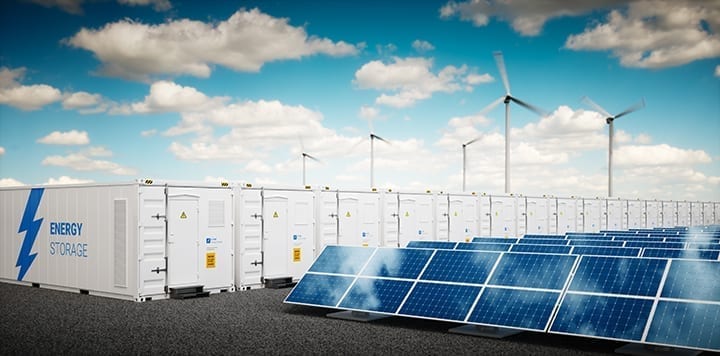Vermont and ISO-New England Provide an Interesting Renewable Energy Transition Case Study
Credit to Author: Aaron Larson| Date: Wed, 01 Jun 2022 04:14:00 +0000

Vermont doesn’t get a lot of attention outside of Bernie Sanders, but the state’s power system is worth taking a look at as it has undergone a notable shift toward renewable energy. About 80% of Vermont’s power comes from renewable energy. Almost no fossil-fueled plants operate in the state, other than a handful of peaker units, many of which are on the short-list for closure.
Vermont is part of the ISO-New England market. Vermont doesn’t have a huge load. Interestingly, both the summer and winter peaks are about 1,000 MW. In the summer, the peak typically hits after dark. Vermont is the only state in ISO-New England’s footprint in which that is currently happening, but the peak time trend is creeping later into the day in all six states served by the market.
Distributed Energy Proliferates
The reason is that rooftop solar has become widespread in the region. According to ISO-New England, Vermont had 434.24 MW of installed solar capacity at the end of 2021. For context, remember, that’s roughly 43% of the state’s peak load demand, and it’s all distributed generation.
“Almost every school in the state of Vermont has solar on it,” Chris Root, COO for Vermont Electric Power Co. in Rutland, Vermont, said during a presentation at the IEEE PES T&D Conference & Exposition, held in New Orleans, Louisiana, April 25–28. “But, we don’t have large solar. This isn’t like Arizona, where you go in the desert and put 300 MW. The largest single photovoltaic plant in Vermont is only 20 megawatts. … We’re talking about distributed resources—this is the model of distributed resources. They’re on houses. They’re on fields. They’re on businesses. But, it is very distributed, mostly on distribution and sub-transmission systems.”
As rooftop panels produce electricity during daylight hours, they effectively keep the generation needed from utilities less than would otherwise be the case. Then, when the sun goes down, power companies have to make up for the lost generation. We’ve all heard about California’s “Duck Curve,” but Vermont has a Duck Curve of its own.
Energy storage is seen as a vital component in managing the swings. Green Mountain Power (GMP), which serves approximately 270,000 residential and business customers in Vermont, implemented a “Home Energy Storage” program that has reportedly been very successful. The program has three options: Bring Your Own Device (BYOD), Enphase IQ Battery, and Tesla Powerwall.
Without getting into all of the details, GMP says customers can get up to $10,500 toward a home battery purchase using the BYOD option, or they can lease Enphase IQ or Tesla Powerwall battery systems on a 10-year plan for $65 and $55 a month, respectively. Customers can save money by paying the full lease upfront for $6,500 and $5,500, respectively.
To participate in the program, GMP requires customers “to share access to the batteries to cut power demand during expensive energy peaks when people are using a lot of energy, which helps lower costs for all.” The company said its growing network of shared stored energy reduced about $3 million in costs for all customers in 2021 by cutting power demand during energy peaks.
Root said there are a couple of big benefits pocketed by cutting peak load demand. First, the monthly bill for the state’s regional transmission is based on the peak for the month, so keeping it low keeps the bill down. Second, the annual capacity charge that must be paid is based on its “key quote,” and cutting peak load also keeps that as low as possible.
Record-Setting Low Demand
On May 1, consumer demand for electricity from the bulk power grid in ISO-New England dropped to 7,580 MW during the afternoon hours—the lowest mark observed by system operators in the ISO’s history. It was a Sunday, which typically sees lower demand than other days of the week, and afternoon temperatures were in the 50s and 60s across New England, which meant heating and cooling systems didn’t have to work terribly hard, but sunny skies were the clincher. ISO-New England estimated production from behind-the-meter solar resources was more than 4,000 MW of electricity during this period, tempering demand on the bulk power grid enormously.
While May 1 set a new a record, it was really just the continuation of a trend seen all across New England. ISO-New England said it has “already seen nearly as many so-called ‘duck curve’ days, during which demand from the bulk power system is at its lowest in the afternoon hours and not overnight, in 2022 as in all previous years combined.”
“New England’s power system is changing right in front of our eyes,” Vamsi Chadalavada, ISO-New England’s COO, said in a statement. “While these changes haven’t happened overnight, a day like May 1 is a good reminder of the progress New England has made in its transition to the future grid.”
Still, Root doesn’t see Vermont being powered from 100% renewable energy anytime soon. He noted that during the winter, there are typically five days when the state gets zero generation from wind and solar. Batteries can fill gaps overnight, and maybe with enough installations and performance improvements in the future, they can fill longer gaps, but they’re unlikely to reach five-day stretches without enormous overbuild.
“The reality is we’re going to have carbon-based fuels for a while,” Root said. “If we can use natural gas for a while and transition away from coal, that’s okay. It’s much better than the alternative.” He was also a strong advocate for nuclear power, saying, “If you’re going to really decarbonize, those nuclear plants are important. They need to stop shutting them down; you need to be building new ones eventually.”
—Aaron Larson is POWER’s executive editor.
The post Vermont and ISO-New England Provide an Interesting Renewable Energy Transition Case Study appeared first on POWER Magazine.